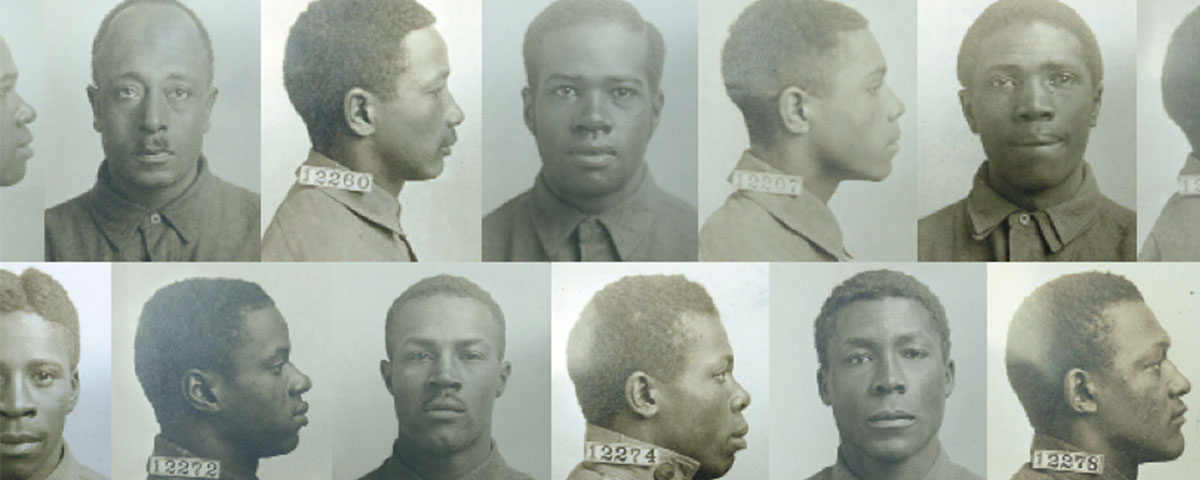On December 11, 1917, at sunrise, 13 men were hanged on a single gallows just outside Fort Sam Houston in San Antonio, Texas. Nine months later, six more men were hanged at the same spot. The condemned were all African American soldiers from the U.S. Army’s 24th Infantry Regiment; the events that brought them to that end, and the courts-martial that sent them to the rope, are a little-known episode in the history of the nation’s involvement in World War I and the experience of Black soldiers in its racially segregated army.
When the United States entered the war on April 6, 1917, the War Department began establishing temporary training camps across the country to accommodate the Regular Army’s rapid expansion. Communities eager for the economic boost the camps would provide rushed to nominate their cities as locations for the new posts. Texas was already home to several permanent army forts, and other cities in the state hoped to get their turn at the federal trough. When it was announced that Houston had been selected for a training facility to be named Camp Logan, the citizens of the city celebrated.
The jubilation was muted, however, when the army announced that it was posting the 3rd Battalion of the 24th Infantry Regiment to guard the training camp while it was being constructed. The 24th was one of four all-Black regiments in the Regular Army. It had an excellent service record, but to many of Houston’s White citizens the only thing that mattered was that the regiment’s soldiers were Black.
In 1917 Texas had some of the most restrictive segregation laws in the country. The prospect of Black soldiers being garrisoned in Houston was regarded by some White citizens of the city as an outright insult. Owners of businesses in Houston were dismayed for more-pecuniary reasons, since the city’s Jim Crow laws meant that the Black soldiers would not be able to patronize most businesses. Nonetheless, civic leaders hastened to assure the army that the city would welcome the soldiers no matter the color of their skin. That was either a naive assumption or a deliberate falsehood.
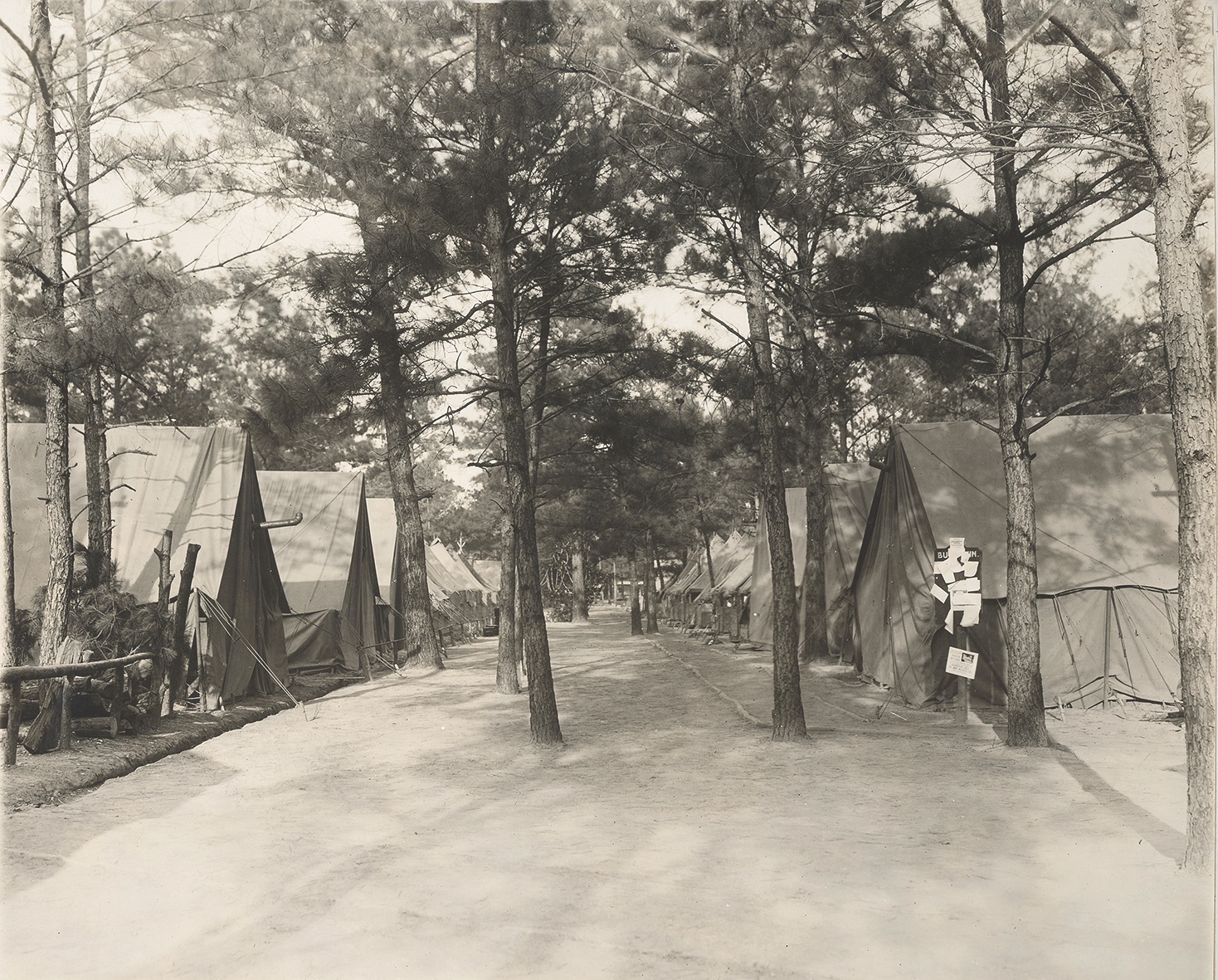
The 3rd Battalion arrived on July 29, and trouble began almost immediately as the new arrivals’ expectations of fair treatment collided with Houston’s entrenched racial animosities, enforced by a police department the army later described as having “a reputation for treating negroes badly.” Matters came to a head on August 23. Two Houston policemen, Lee Sparks and Rufus Daniels, arrested Private Alonso Edwards for being disorderly; Sparks later boasted that he “beat him until his heart got right.” A short time later one of the 3rd Battalion’s noncommissioned officers, Corporal Charles Baltimore, arrived on the scene and attempted to find out what had happened to Edwards. Sparks subsequently claimed that Baltimore was insolent, but witnesses testified that Baltimore did nothing more than ask the policemen what they had done to Edwards and had crossed his arms when speaking to them.
Regardless of how Sparks chose to interpret Baltimore’s behavior, the fact was that the corporal was acting in his official capacity as one of the battalion’s provosts, or military policemen. The army’s subsequent investigation determined that the corporal, “as a part of the duty required of him, made inquiry of Officer Sparks as to the circumstances of the arrest of the soldier.” Sparks, however, was enraged that a Black man dared question his actions. He drew his pistol and fired at least three shots at Baltimore, who was unarmed, and then chased him into a nearby house, where he beat him nearly senseless before arresting him.
Back in the 3rd Battalion’s camp, word of the altercation spread quickly through the ranks, but the rumor was that Sparks had actually killed Baltimore. Major Kneeland Snow, the newly installed battalion commander, sent his adjutant to retrieve Baltimore from police custody; unfortunately, word that Baltimore was alive did not spread as quickly as had the rumor that he was dead. It may have been far too late for it to matter anyway: Many soldiers in the 3rd Battalion had already decided they had taken enough abuse from Houston’s police.
Soldiers began taking rifles from the weapon racks and filching ammunition from the company supply tents. As evening fell, Snow attempted to regain control of the rapidly deteriorating situation and ordered the battalion to muster. He tried to ameliorate the soldiers’ anger by assuring the men that Baltimore had done nothing to deserve the treatment he received from the police and promised that Sparks would be punished for his actions, but his speech failed to calm the mood. Then someone shouted: “There is a mob coming! Get your guns!”
The officers’ tenuous control of the battalion shattered completely. A shot was fired—by whom it was never determined—and that was quickly followed by a wild fusillade of gunfire directed outward from the camp’s perimeter. Several men later testified that a soldier named Frank Johnson ran down the company street yelling, “Get your rifles, boys!”
The threat of an angry White mob was something with which every Black person in the South was all too familiar. Texas had a grim reputation for mob violence against Black citizens and for the terror tactic of lynching; even the army recognized that the specter of a lynch mob would be taken seriously by every Black soldier.
Pandemonium seized the camp. Vida Henry, I Company’s first sergeant, would later be accused of having plotted mutiny, although there remains considerable doubt as to whether he did. It’s fairly certain, however, that Henry then took the fatal step of assuming leadership of the uprising. In the absence of all their company officers, about 150 soldiers marched out of camp, shouting that they would go to the police station and avenge themselves on the policemen who had persecuted them since their arrival. Henry set a rear guard on the column with orders to shoot any man who fell out of the march or who attempted to return to camp. They were all in it together now, even those who may have been reluctant participants. “If we die,” one of the soldiers declared, “we will die like men.”
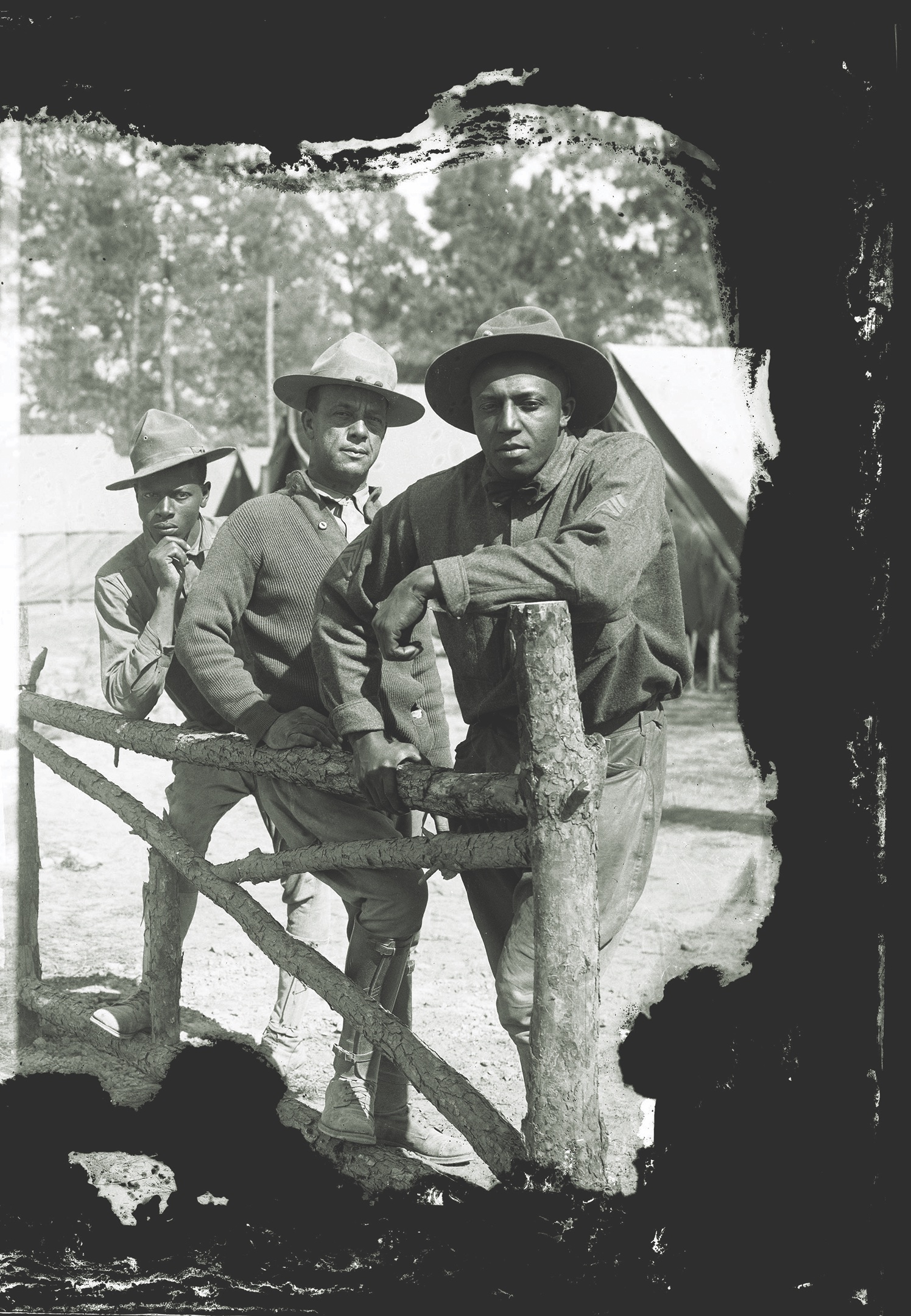
Back in camp, Snow completely lost his bearing and his nerve. He telephoned Houston’s former chief of police and was frantically trying to explain what was happening when the line went dead. The chief later testified that Snow was so hysterical that he was nearly incomprehensible. A few moments later, Snow abandoned his post and fled the camp.
Meanwhile, the soldiers were heading deeper into town. Some Houstonians would later claim that in the hours before the riot they overheard soldiers threatening to kill all White people, but the soldiers’ actions indicated a rather different objective. They shot at the porch lights of houses as they passed, apparently to mask their movement, and fired on several vehicles they encountered in the dark. In at least two of these incidents, citizens who had no part in the trouble and no association with the police were killed, probably in error. In most cases, however, the soldiers clearly indicated that they were not interested in indiscriminate killing. When a civilian ambulance ran into Henry’s column, the soldiers shot out its tires and ordered it to turn around, but they did not harm the crew. One Houston resident, Maude Pitts, testified that when she stumbled into the midst of the soldiers that night, one of them told her, “Get away from here, White lady, we don’t want to kill you, but we are after the White policemen who have called us names and have been beating our men up.”
A short time later Captain James Mattes, a National Guard officer whose company had been ordered to quell the riot, ventured out ahead of his unit in a civilian automobile driven by Edwin G. Meineke, a civilian police officer. In the near total darkness, the jittery soldiers, on seeing uniforms, assumed that the men wearing them were policemen. They fired on the car and killed both Mattes and Meineke. Another National Guard officer later stated: “I am fully convinced that Captain Mattes would never have been shot if he had not been in the car with a police officer. I believe that the negroes thought he was another policeman.”
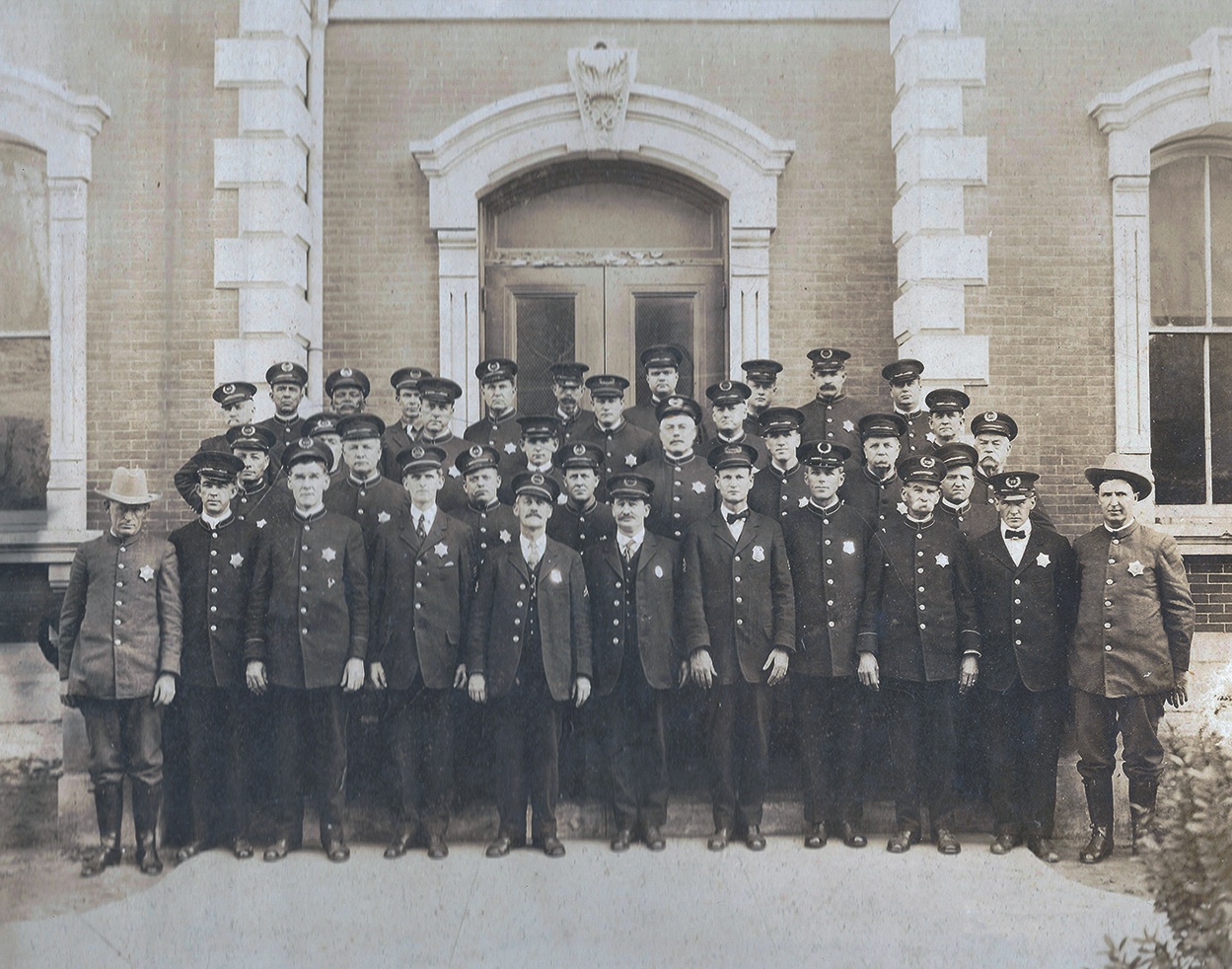
The killing of Mattes and Meineke completely undid the already shaky resolve of most of the soldiers. Fighting with racist policemen at least had an air of justifiable retribution about it, but shooting a uniformed army officer in the performance of his duty was something else entirely, and most of the infantrymen, professional soldiers as they were, wanted no part of that. The column began to dwindle as more and more men took advantage of the darkness to slip away and try to get back to camp. Henry refused to return with them, but he no longer held the leadership of the uprising. He remained alone as the soldiers, now more like a rabble, began straggling back to camp. The next day he was found dead of a gunshot wound. It was reported that he had committed suicide, but the official coroner’s inquest suggests he was murdered.
When the violence ended, the army immediately moved to gain control of the situation that Snow had mishandled so badly. Houston’s district attorney demanded the surrender of all accused mutineers for civilian prosecution, but the army refused, having quickly concluded that the Houston incident “could be characterized in only one way and that as mutiny.” Mutiny was a military crime, and as far as the War Department was concerned all other crimes committed during the riot resulted from it. The alleged mutineers would face an army court-martial, not a civilian trial.
Major General John W. Ruckman was commander of the U.S. Army’s Southern Department, which meant the mutiny and the unit involved all fell within his military jurisdiction as convening authority of courts-martial in the case. For whatever reason—a desire to quell the increasingly vitriolic rhetoric coming from Texan civil authorities or to demonstrate firm military discipline—Ruckman decided to prosecute the accused mutineers as fast as possible.
The first court-martial, United States v. Nesbit, convened at Fort Sam Houston in San Antonio just five weeks after the mutiny. Sixty-three men of the 3rd Battalion were simultaneously tried on charges of disobedience of lawful orders, mutiny, assault with intent to commit murder, and murder. It was the largest court-martial in the U.S. Army’s history, and from the outset it appeared that the odds were stacked against the defendants. The defense was represented by just one officer, Major Harry S. Grier, who was to serve as single counsel for all defendants. The prosecution was represented by a team of experienced trial lawyers who had more than a month to prepare their case. Grier had taught law, but he was not a bar-certified attorney and had only two weeks to muster his defense; his primary qualification was that he was “available.” Further controversy developed when a key witness for the defense, Captain Bartlett James, was found dead under suspicious circumstances just days before the trial began. His death was ruled a suicide.
From the outset, serious flaws in the prosecution’s case were apparent. If some men in the 3rd Battalion had risen in arms against the orders of their officers, they were guilty of mutiny, but the government was required to prove their guilt beyond reasonable doubt. Much of the prosecution’s case hinged on the testimony of soldiers who were themselves accused of participating in the violence, which raised legitimate questions about possible self-serving motivations for some of that testimony. Several defendants were accused of instigating the revolt or having personal culpability in several of the killings that night, but the evidence against others was much less conclusive. The army never actually proved the existence of a mutinous conspiracy.
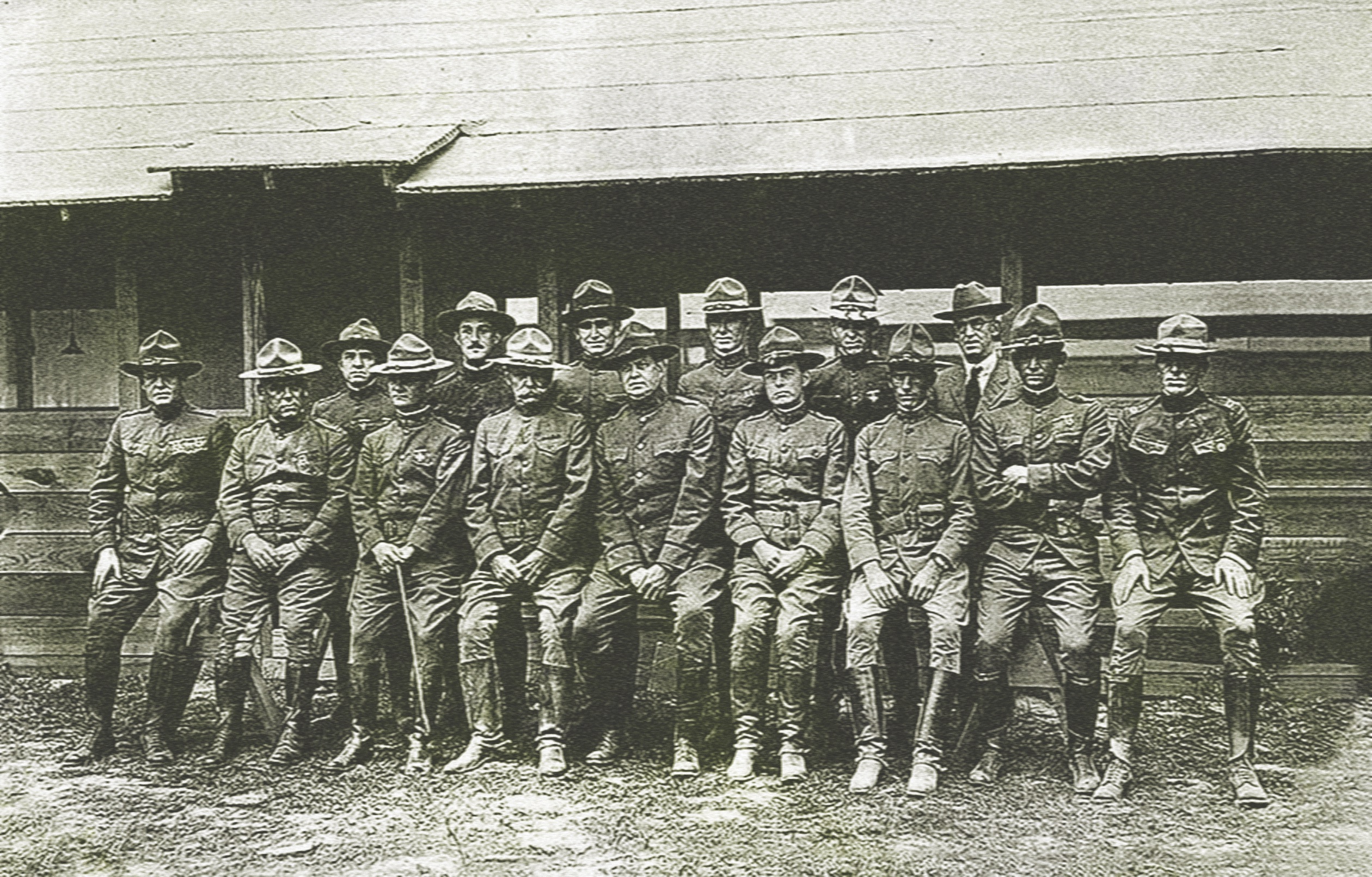
Nonetheless, on November 30, just 29 days after the trial began, the prosecution rested its case and the officers of the court-martial retired to consider their verdict. Two days later they announced their findings: five acquittals and 58 convictions. Forty-five men were sentenced to terms of imprisonment ranging from two years to life, and 13 men were to hang. Corporal Baltimore was one of them.
Ruckman then made a decision that would forever stain the court-martial: He ordered the verdicts and sentences to be kept secret and set the date of execution for December 11, allowing no time for external review or appeal of the sentences. On the evening of December 10, the condemned men were moved from the Fort Sam Houston guardhouse and sequestered in one of the post’s cavalry barracks. There they were permitted to write final messages to their families and friends. Private Thomas Hawkins wrote to his parents: “Dear Mother & Father, When this letter reaches you I will be beyond the veil of sorrow….I am sentenced to be hanged for the trouble that happened in Houston Texas altho I am not guilty of the crime that I am accused of.” Other men also swore to their innocence.
In the predawn darkness the next day, the 13 soldiers were driven to the outskirts of Fort Sam Houston, where the post engineers had erected a gallows about 100 yards from the overgrown banks of Salado Creek. Down the slope, 13 freshly dug graves waited. Surrounded by a cordon of infantry and attended by a local minister, the condemned men were led up the gallows steps. An eyewitness wrote that they remained composed and calm and conducted themselves with remarkable dignity. At one point, led by Private Johnson, they began to sing, quietly and in unison.
At 7:17 a.m., one minute before official sunrise, the trapdoor was sprung. After a mandated interval medical officers confirmed that the men were all dead, and their bodies were cut down and placed in raw wooden coffins. Each man’s name was written on a piece of paper and placed inside a soda bottle that was sealed inside the coffin with him. After the burial the scaffold was disassembled, and all traces of the execution were removed.
Six days later, a second court-martial, United States v. Washington, convened to try the cases of a further 15 men of the 3rd Battalion. That trial concluded after only five days and produced 10 prison sentences and five death sentences. This time, however, there would be no secretive rush to the gallows like the one Ruckman had arranged after the first court-martial. The announcement that the first 13 men had been executed without executive review or chance of appeal had caused public outrage, and African American civic leaders petitioned the government to ensure that such a thing could not happen again. The War Department directed that execution of sentences be suspended pending review by President Woodrow Wilson, and two weeks after the executions the Articles of War were hastily amended by General Order No. 7, which established that no sentence of death handed down by a military court inside the territorial boundaries of the United States could be carried out until after the president had personally reviewed it.
With that stipulation in place, the second court-martial’s sentences were forwarded to the War Department. While the review process was underway, the third and final court-martial, U.S. v. Tillman, convened to try the remaining 40 accused mutineers. When that trial concluded on March 26, charges against one soldier were withdrawn and two men were acquitted. Twenty-six men received prison sentences, and 11 were sentenced to death.
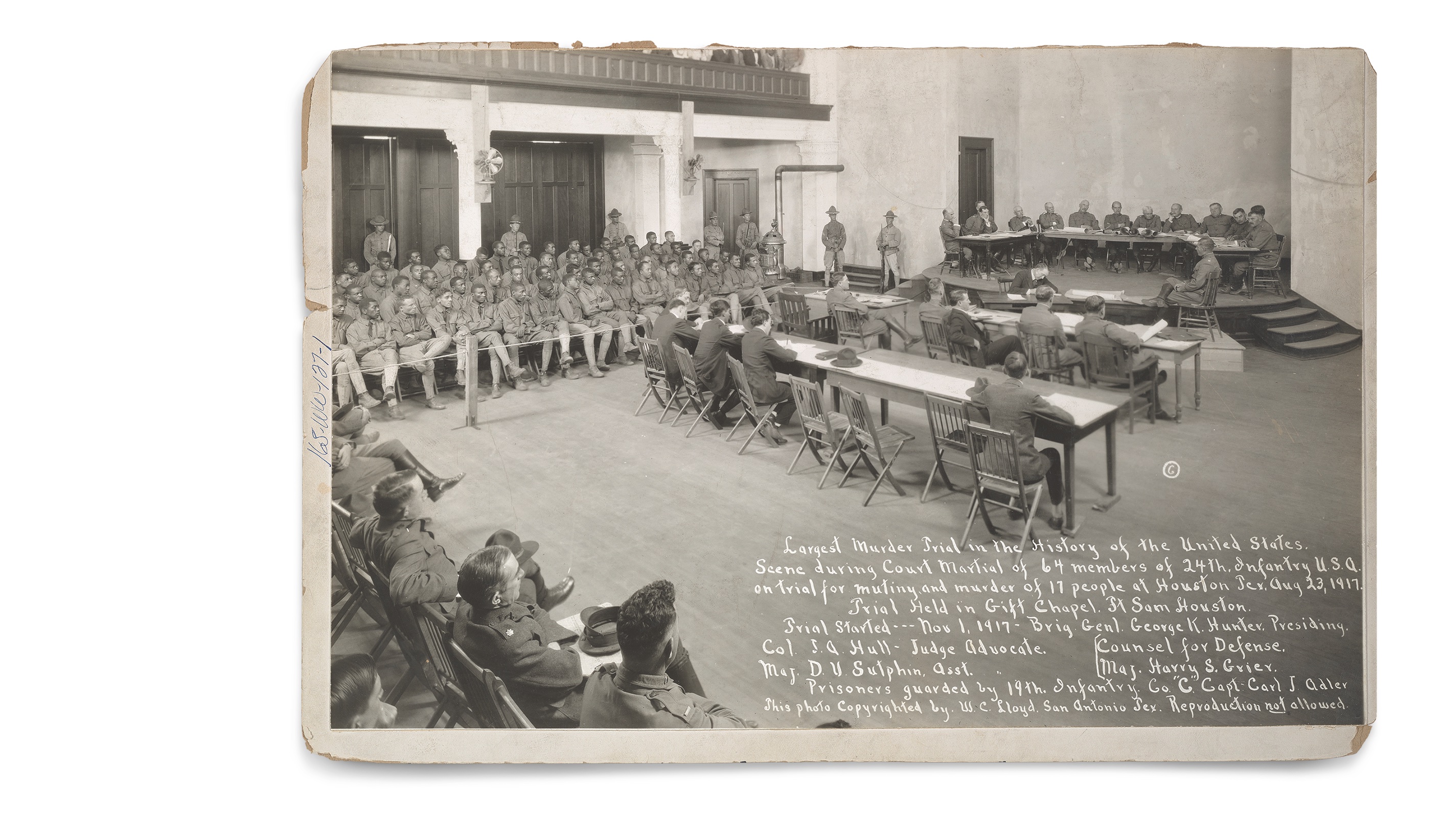
The army’s handling of the first executions had angered major segments of the American public just when the nation needed the support of all citizens in the war effort. Black Americans were incensed at how the soldiers of the 24th Infantry had been treated, both by Houston’s police and by the army’s judicial system. African American newspapers openly questioned whether Black men should wear the uniform of a country that treated them so badly. Secretary of War Newton D. Baker warned of this in a letter he appended to the second round of sentences when he passed them on for Wilson’s review. “I presume you may already have heard it,” he wrote, “but I beg to assure you that it is true that throughout the Southland generally the masses of negroes consider the execution of the thirteen as ‘a lynching.’” He then showed the president which of the condemned men were convicted of specific acts of murder and which of general participation. Wilson approved all five of the death sentences in the Washington case and commuted 10 of the death sentences in the Tillman case to imprisonment.
The army then moved to carry out the final executions. On the morning of September 17, five men went to the gallows. After the hanging, they were interred by the creek beside the 13 soldiers hanged earlier. But there should have been six bodies to bury, not five.
Three days later an unsettling telegram from the War Department arrived at Fort Sam Houston. “Morning paper reported execution of five of the Twenty-fourth Infantry but did not report execution of Private Boone,” it read. “Not understand why Boone was not executed with the rest.” Somehow, in all the preparations, the army had overlooked the fact that Wilson had approved the execution order on Private William Boone. Boone had believed that his death sentence was commuted to imprisonment; now he learned that he was to die after all. There was more conclusive proof of Boone’s guilt than some of the other defendants—he had shot at close range one of the civilians killed in the mutiny—but his fate was perhaps the hardest. On September 24, a final procession took him out to the reassembled scaffold where his comrades had died, and there he faced the rope alone.
The events in Houston and the subsequent courts-martial and executions were almost eclipsed by the closing months of the war, but the attendant controversies refused to fade away entirely. The factors that so antagonized the men of the 24th Infantry were repeated in the “Red Summer” of 1919 as Black troops returning from France were confronted by racial violence on an unprecedented national scale. African American commentators regarded the 19 soldiers executed at Fort Sam Houston as martyrs who had fought back against the demeaning conditions of Jim Crow segregation. The army viewed them as mutineers whose actions brooked no possible mitigation. Southerners who were committed to maintaining White supremacy saw them as the thing they most feared: Black men who would not “mind their place.” As years passed, the trials that convicted the men were increasingly condemned and criticized.
The problem, common in matters of military law, is that while there is much about the 1917–1918 courts-martial and sentences that can be accurately described as unjust, the fact remains that the proceedings were legal at least by appearance. The first round of trials was conducted under the Articles of War extant 1916, a code that allowed death sentences of military courts in time of war to be carried out without appeal or presidential review. Ruckman was therefore legally able to rush the first 13 hangings, but the revision to the Articles of War in January 1918 changed the law to ensure that could never happen again.
It was absolutely unfair that men on trial for their lives had only the services of a single officer as defense counsel, while the prosecution mustered both numbers and legal experience against them, but again, such practice was perfectly legal before it also was corrected by later changes in American military law. Because hanging was the mode of execution, some critics accused the army of carrying out a “military lynching,” but the crime for which the men were convicted, and not their race, may have determined the use of gallows. The Manual for Courts-Martial in use in 1917 stated, “Death by hanging is considered more ignominious than death by shooting and is the usual method of execution designated in the case of…persons guilty of murder in connection with mutiny.”
Still, Ruckman’s decisions are hard to defend. While the wording of the 1916 Articles of War allowed him to execute the first round of death sentences without submitting them to review, military law did not actually require that he do so. A passage later in the same code provided that “any officer who has authority to carry into execution the sentence of death…may suspend the same until the pleasure of the President be known.” Ruckman was therefore authorized to wait until the sentences were reviewed, but he chose not to.
Overt racism is undoubtedly the single most important factor in this story, but the wording of the various articles under which these courts-martial were conducted contained no reference to race. Mutiny is a crime against military law regardless of the race of the soldier who commits it, and the legal language of the Articles of War was concerned only with the identities of the accused soldiers under the law. It is completely appropriate, however, to question whether they were actually judged without bias. One might also ask why the court chose not to exercise its full prerogative in the matter of mitigation. Military courts are rarely willing to consider any exculpation for an act of outright mutiny, but the officers of the courts-martial still had the option of extending mercy in the form of prison sentences rather than imposing the ultimate penalty of death.
Three groups can be said to share the greatest responsibility for how the Houston incident played out. First, the city of Houston, with its combination of Jim Crow laws, an abusive police force that used physical violence to enforce those laws, and the entrenched attitudes of Southern racism that upheld them, was the undeniable catalyst of all the trouble. Second, the men of the 3rd Battalion who took up arms in an alleged act of mutiny were responsible for their decision to riot and disobey the lawful orders of their officers, even though one can sympathize with their actions as an understandable retaliation against racist abuse. The third party culpable in this sad history is the U.S. Army itself.
The army knew very well that Texas in 1917 was a hotbed of racist hostility against Black soldiers; it had been so for decades. Eleven years earlier, an officer commanding Black troops in the 25th Infantry had written, “The sentiment in Texas is so hostile against colored troops that there is always the danger of serious trouble between the citizens and soldiers whenever they are brought into contact.” Nothing had changed in the interim, and thus the army failed in its first responsibility to its own men when it placed them in harm’s way, ignoring the racism of Houston’s Jim Crow laws. Rather than using its considerable power to insist that its soldiers be treated with the respect due U.S. servicemen, regardless of the color of their skin, the army placed the men of the 3rd Battalion in an untenable situation. Within the battalion itself, Snow’s deplorable lack of leadership was a critical factor. The inspector general’s investigation into the uprising blasted Snow for behavior that “demonstrated his unfitness to command” and recommended that he be court-martialed for dereliction of duty, but in one more failure of justice, he never was. Ruckman was never officially censured for his decisions in the courts-martial, but in May 1918 he was quietly relieved of his command, reverted to brigadier general, and sidelined for the duration of the war.
Though the courts-martial that followed the Houston uprising are often overlooked in broad histories of World War I, they were pivotal events in the development of American military law and the history of racial segregation in the U.S. Army. These trials resulted in the largest mass executions of American soldiers in U.S. history, and they prompted lasting changes to the military judicial process. A century later, the story continues to unfold. In October 2020 a petition was presented to the secretary of the army to overturn the results of the 1917 courts-martial. MHQ
John A. Haymond is the author of Soldiers: A Global History of the Fighting Man, 1800–1945 (Stackpole Books, 2018) and The Infamous Dakota War Trials of 1862: Revenge, Military Law, and the Judgment of History (McFarland, 2016). His research into the 1917 Houston uprising was supported by a grant from the East Texas History Association.

